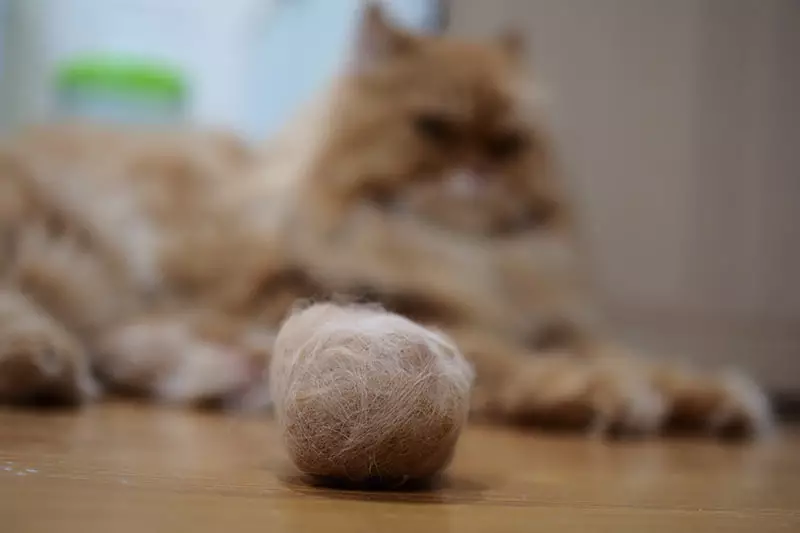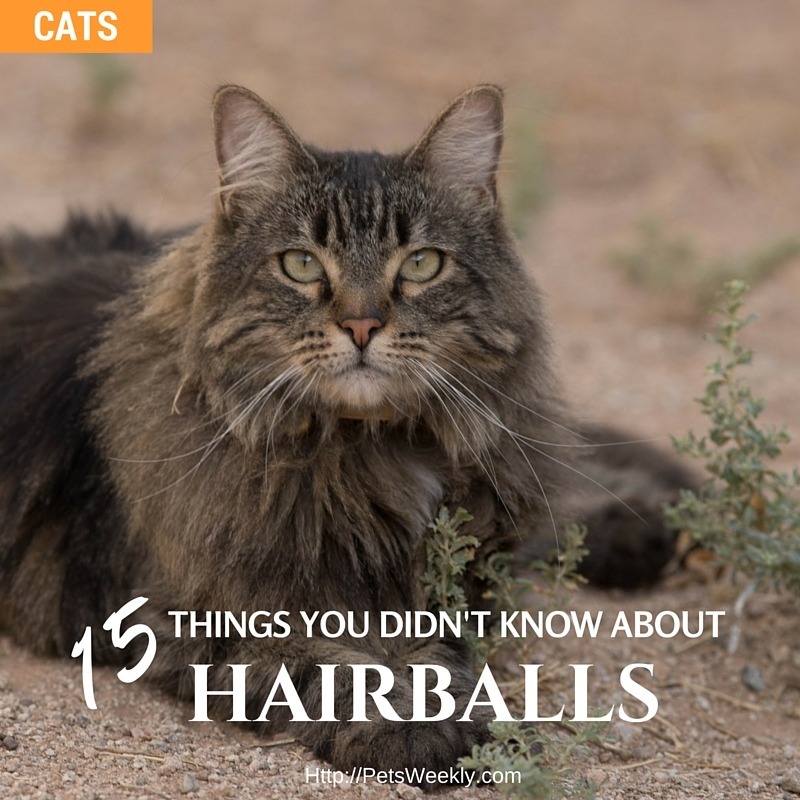Cat Hairballs: Causes, Symptoms & Treatment
Table Of Content

Therefore, when used sparingly, a tiny amount of petroleum jelly or similar gel-based hairball treatment marketed for cats can reduce hairballs from being expelled the wrong way. Some pet owners may confuse a true cough with an attempt to throw up a hairball. If your cat is making a “hacking” noise, but no hairball is coming up, your cat may be coughing, which can be a sign of a respiratory issue and requires a vet exam.

What Causes Cat Hairballs?
Hazardous Potential Hairballs are the unsavory by-product of a normal habit. This happens because the tiny backward-slanted projections (papillae) that roughen the surface of her tongue propel the hair down her throat and into her stomach. Unfortunately, Dr. Goldstein explains, the main structural component of the hair — a tough, insoluble protein substance called keratin — is indigestible. Treating hairballs consists of first addressing the current hairball your cat has, then making some lifestyle changes and additions to your cat’s diet to prevent future hairballs.
Senior Pet Care: How Financing Can Help You Prepare
One teaspoon a day can help give them the fiber that they need to pass the hair easily. Just make sure the pumpkin that you use is plain, pure pumpkin and not pumpkin pie filling, which has added sugar and spices that may be harmful to your cat. Laxatone is also a mild laxative that will push the contents of your cat’s stomach through the digestive tract and stimulate digestion. Your cat will pass a smaller quantity of hair instead of choking up a hairball. When your cat’s fur falls out, it will likely get caught in the undercoat, a layer of soft, fine fur that grows close to the skin. If you groom your cat every day or every other day, you’ll reduce the hair your cat ingests.
Strange Places That Cats Hide: Olga’s Preferred Spots
Nowadays, Jessica is a full-time writer who loves to explore all animal topics while contemplating the birds and squirrels enjoying the oasis of her backyard. Hairball lubricant is a paste or gel that comes in enticing flavors. It lubricates the inside of the cat’s intestines to get the hair moving. Just put a dab of the lubricant on your cat’s paw, and they will lick it off.
Cat Hairballs: Why They Happen and How to Handle Them
Deshedding brushes are especially helpful, as they gently remove loose hairs in the top coat of a cat’s fur and the denser undercoat. There are also many hairball prevention treats, chews, and diets on the market which use similar formulations to help hairballs move along your cat’s digestive tract. Your veterinarian is a great resource to recommend a product that can keep your cat hairball free. Your cat may self-groom every day, but the less hair they swallow means less of it will wind up in their stomach. The only way to prevent hairballs is to prevent your cat from ingesting too much hair. You won’t be able to get your cat to stop grooming themselves, and you shouldn’t try.
FurZapper Review: Does This Pet Hair Remover Work? - Family Handyman
FurZapper Review: Does This Pet Hair Remover Work?.
Posted: Wed, 24 Apr 2024 07:00:00 GMT [source]
All About Hairballs
These prevention strategies can help reduce the severity of your cat’s hairball problem. When the hairball hits the floor, it’s usually not ball-shaped anymore; it will probably be shaped like a tube. The hairball may be slightly discolored and contain food particles that got stuck in the hair while moving through the stomach. You may or may not also see food or grass in the vomited hairball mass. At GreatPetCare™, we're proud to be part of Covetrus®, a global animal health company that's all about helping vets improve care for our furry friends. Whether it's providing top-notch products, services, or technology, our unified platform connects vets with the knowledge and award-winning resources they need, so their practices and clients can thrive.
Cornell University College of Veterinary Medicine
Feeding smaller amounts of food more frequently can also help keep hairballs at bay. Most wet foods are also helpful to feed, as canned food contains a higher moisture content to help move furballs through the intestines. Pet parents can also encourage increased water consumption by ensuring that water bowls are always clean and full or using a fountain or bubbler, which many cats enjoy.
How to Weigh Your Pet at Home
Although laxatives may be effective in enabling passage of a stubborn hairball, Dr. Goldstein strongly advises owners never to give their cats a laxative without the approval and supervision of a veterinarian. The same advice applies to the use of commercial diets that claim to be effective in preventing or relieving such an obstruction. While you might not need to worry about the occasional hairball, there are some instances in which you should see your vet. It’s rare, but hairballs can grow so large that your cat can’t pass them, or they can get lodged in the digestive tract, creating a blockage. Hairball control treats give your cat the ingredients necessary to pass hairballs without you having to change their regular food or use a messy gel. Even after your cat has passed the hairball, you can continue giving them these treats to prevent hairball buildup in the future.
Manage Medical Records
Adding fish oil to your cat’s food can help them pass a hairball naturally. A teaspoon of oil every week should be enough to keep things moving. Take your cat’s daily food allotment and divide it into four to eight small meals throughout the day. Not only can this keep their digestive system working to remove more hair, but it can also help your cat maintain their weight, feel more satisfied, and have more energy.
Be sure to talk to your vet before you make any changes to your cat’s diet too. Some hair passes through the digestive tract and into the feces, while some hair accumulates in the stomach and is later expelled by vomiting. Hairballs are more common in long-haired breeds, but short-haired cats can experience them as well.
A one-quarter teaspoon can be placed on your cat’s paw for him or her to lick off and swallow. As discussed, if your cat is only producing a hairball occasionally, veterinary intervention is not usually necessary. However, schedule an appointment for a vet check-up if your cat has more frequent hairballs. Always seek veterinary care if your cat appears as if he or she is trying to expel a hairball but can’t.
Nothing can be done to totally prevent hairballs in cats, but there are things you can do to reduce the likelihood your cat will have hairballs or reduce their frequency. In addition to offering your cat a fresh, clean water source each day, try to encourage them to drink more. Use a water fountain that might interest them more than a regular bowl of water. You can also add water or broth to their food to give them more moisture. The proper amount of hydration will keep their digestive systems working well. While grooming is a part of being a cat, you can discourage your cat from spending all day licking themselves by playing with them and introducing them to new stimuli.
Comments
Post a Comment